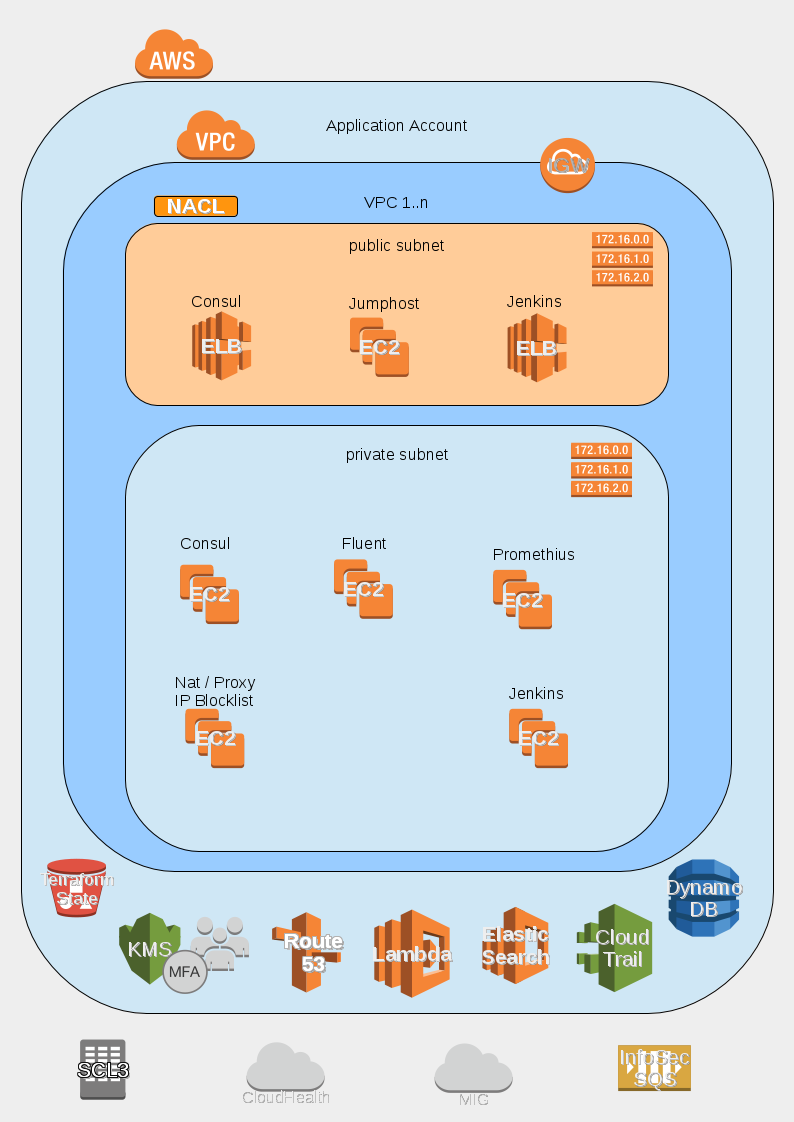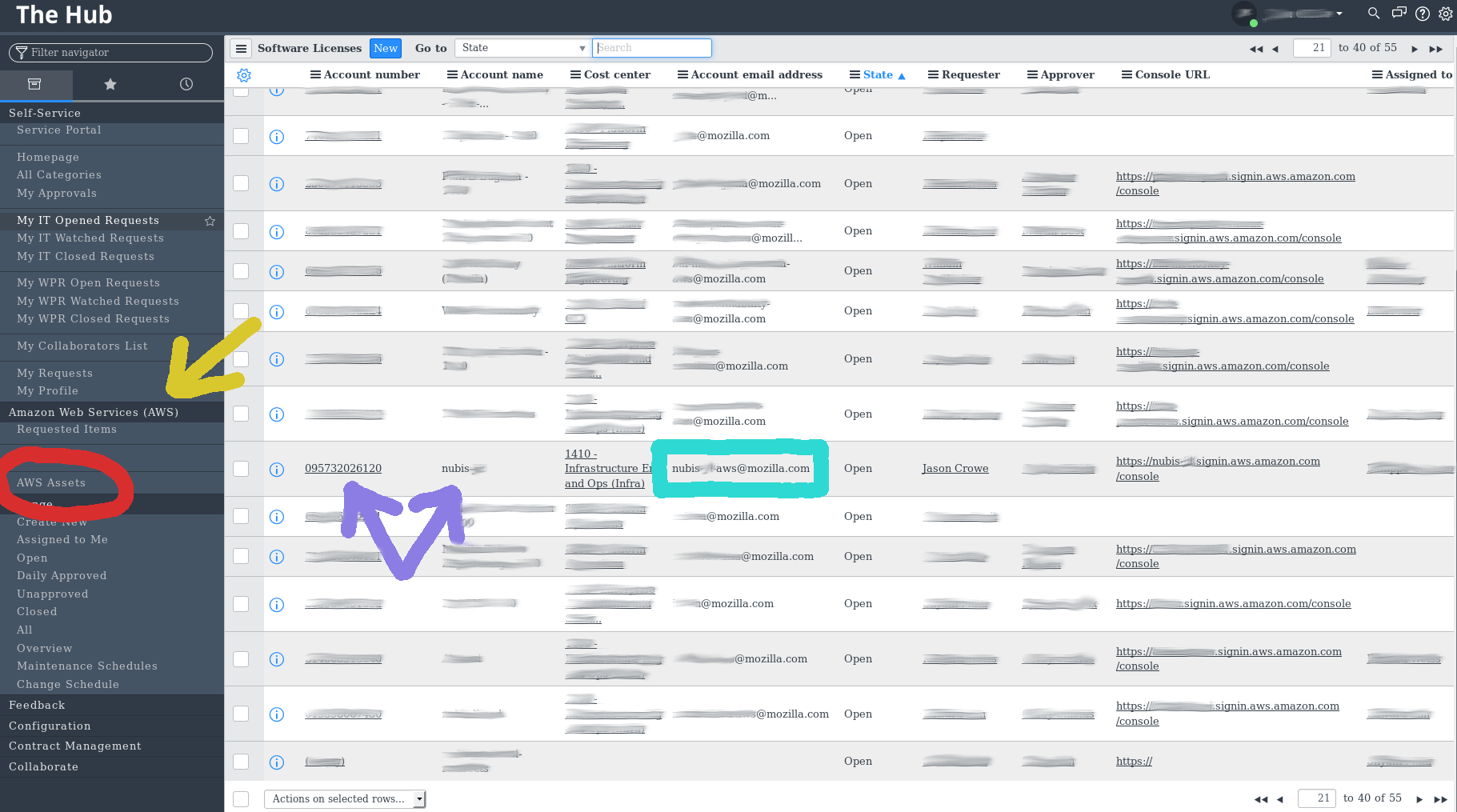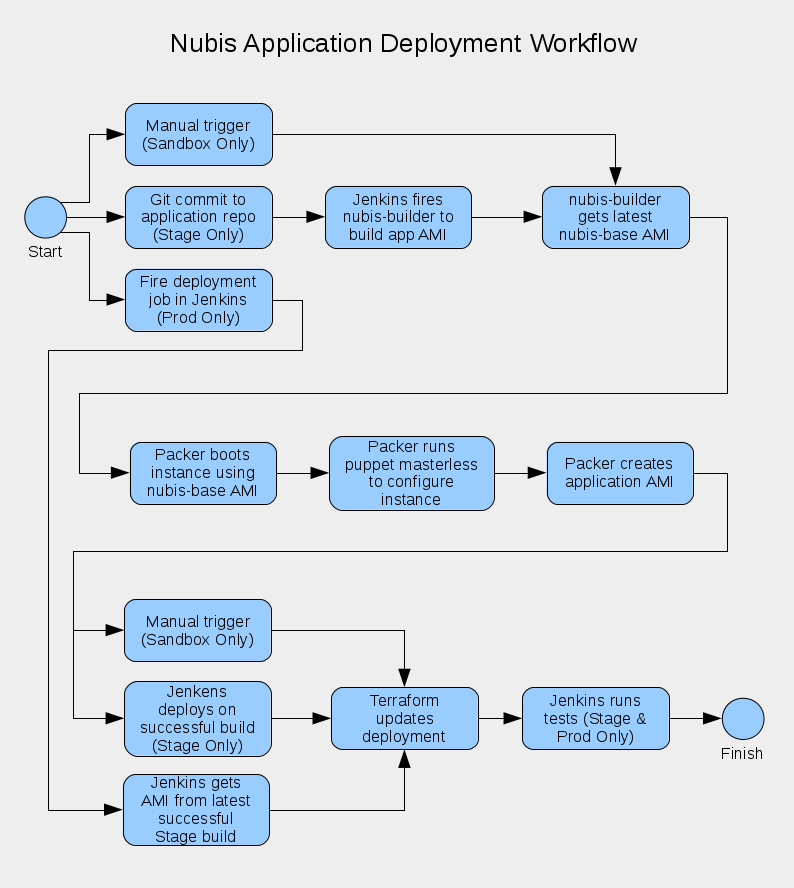Deployment Overview
A Nubis Account Deployment consists of a number of standard services and security integrations. This document provides and overview of the account and services provided. Each service is self-contained and links are provided to each services' documentation which details that specific service.
Nubis Account Diagram

NOTE: Details for the deployment including; naming conventions, relationships, permissions, etcetera, can be found in the Terraform template used for deployment.
Services Provided
This is a list of all of the services available in a Nubis Account.
TODO: Add missing documentation links
- VPC
- Consul
- Jumphost
- Fluent
- Opsec / CloudTrail
- CI
- VPN
- User Management
- NAT / Proxy
- Prometheus
- ELK
It is important to note that not all services are deployed in every account. To determine which services are deployed in a specific account you will need to consult the deployment configuration file for that account. For example, you can find the configuration files for the Nubis' Teams accounts in the nubis-accounts-nubis repository.
Within each configuration file are a set of feature flags, these flags are used to enable or disable specific services and are discussed below.
Decryption Keys
You will need your GPG key added to the authorized configuration to view these files. Git-crypt is used to manage encrypting the files. You will need to contact the team responsible for the deployment repository to gain decryption abilities.
To determine which team to contact you will need to:
- Log into ServiceNow (The Hub)
- You will need the 'Amazon Web Services (AWS)' module enabled (Yellow Arrow)
- Select 'AWS Assets' (Red Circle)
- Locate the account by name or number (Purple Arrows)
- Locate the 'Account Email Address' (Sea-Green Square)
- Send an email to the address requesting access
NOTE: Only Nubis project accounts contain 'nubis' in the name. Application accounts are named after the deployed application.

Security Integrations
There are a number of security integrations deployed into a Nubis Account. These are not available via feature flags and are always deployed in an account. Note that specific services contain additional security integrations which are detailed with the documentation for the service.
TODO: List security integrations
- SSH security group
- MIG
- NSM
- IP Blocklist
- HTTP(S) Proxy
- Cloud Trail
- ?
Feature Flags
Within the account deployment variables file are a number of feature flags. These flags are used to select which services to deploy into the account. For a complete list of services depoyed into a particular account you will need to consult that accounts variables file. Here is an example of some of the feature flags available:
features.consul = 1
features.jumphost = 1
features.fluent = 1
features.opsec = 1
features.ci = 0
features.stack_compat = 0
features.vpn = 0
features.user_management_consul = 0
Deployment Workflow
All deployment methods use Terraform as the descriptive language. The process varies somewhat depending on weather you are deploying a Nubis account or an Application in a Nubis account.
Account Deployment Workflow
Account deployments are quite simple in practice. To deploy an account you need access to the encrypted variables file discussed above. You also need to have admin (.) privileges in AWS. The actual deployment is accomplished with Terraform and is described in greater detail in the nubis-deployment repository.
Application Deployment Workflow
Application deployment is a bit more complex. If you are working in a Sandbox account that you will likely be using a manual process utilizing Terraform. When working in a production account the deployment is automated by using Jenkins as the continuous integration (CI) system
The CI system monitors the application's deployment repository hosted in git, typically GitHub. When a change lands in the repository, CI triggers AMI builds and (if successful) deploys the new image into the Stage environment (VPC). Deployment to production is typically triggered manually, through the CI system. The Prod deployment does not build an AMI, instead it uses the latest successfully built AMI from the Stage environment. This helps to ensure that only working AMIs are deployed into production.
